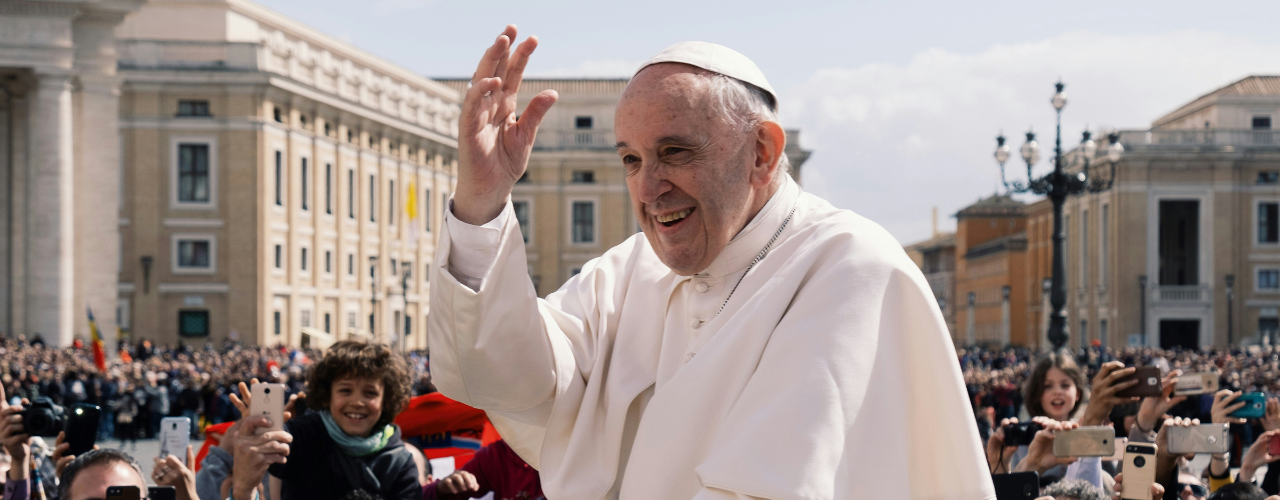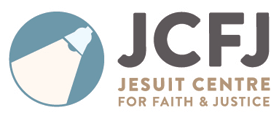
Peadar Kirby
Peadar Kirby is Professor Emeritus of International Politics and Public Policy, University of Limerick and Research Coordinator, Cloughjordan Ecovillage. His novel on the last of the Avignon popes, ‘Misean go Peñiscola’ won second prize in Comórtas Liteartha an Oireachtais 2024.
The avalanche of tributes that followed the death of Pope Francis went far beyond the usual appreciation of the achievements of a public leader. What was striking was the warmth, the sense of personal loss, and the recognition of his authentic love for those on the margins of society. But the wider significance of his remarkable papacy requires a broader and more historical assessment.
For some, the sudden resignation of Pope Benedict in early 2013 felt like the end of the project of restoration that had marked his papacy and that of Pope John Paul II, putting the brakes on the wider potential of Vatican II. The hope was that the new pope would return to the Council’s unfinished business, engaging in a fresh way with the great concerns convulsing humanity. Nobody could have foreseen the new and distinct exercise of the papal office that was to emerge, genuinely revolutionary in its style and substance.
Constrained by the very limited categories of conservative and liberal that have structured much of the evaluation of his legacy, the deeper significance of the Francis pontificate runs the risk of being overlooked. I identify four dimensions that, to me, are of major historical importance.
The first is that he brought the Church back into the centre of public debates, in a way that no pope had done for centuries. Not only did he talk about the major issues of the day, but the passion with which he addressed them and the practical actions through which he expressed his convictions were fresh and at times even shocking. After all, his first visit outside Rome was to the island of Lampedusa, to the frontline of the migration realities convulsing Europe, and one of his final documents was a message to the bishops of the United States emphasising the unique dignity and equality of every person in the context of the migration policies of the Trump administration. While all popes have condemned war, there is a visceral passion to the way Pope Francis spoke about it. ‘Too Long Do I Live Among Those Who Hate Peace’ is the title of the second chapter of his autobiography, Hope, published just months before he died. He not only understood the real threats of climate change and biodiversity loss but made them the subject of his ground-breaking encyclical Laudato Si’, perhaps the most widely read and referenced papal encyclical ever. Similarly, with the damage to society caused by ever deepening social inequality, and his regular and forceful condemnation of what in his final encyclical, Dilexit Nos, he called ‘this perverse
mechanism’ referring to the power of constant consumption and its influence on people’s sense of
their worth, he was a pope whose words went deep. This was pope as prophet, a very very rare
combination. Pope Leo, in his early pronouncements promises a continuation of this engagement with
a world in crisis, most strikingly in his promise to lead a Church “that illuminates the dark
nights of this world.”1
The second dimension flows from the first in that his primary concern was not with the institution of which he was leader but, rather, with the central importance of faith to individual and social wellbeing. In this way he reached out not just to other Christian churches but well beyond that to believers of all faiths and people of good will. Among the most touching tributes to him that I read was one from a Hindu leader in Malaysia, Dr Vinod Sekhar, who wrote about Francis:
He was a man who made kindness radical again, who reminded the powerful that humility was not weakness, who spoke of love not as doctrine but as duty. He was not just a religious man. He was something far more rare – he was universally spiritual.
He therefore exercised leadership in a very new way, all the more striking because of how it contrasted with so many of the global leaders of this era, based as it often is on divisiveness, narrow self-interest and, all too often, serving the needs of a fabulously wealthy economic elite. By contrast, Francis brought
faith back as a key human and social reality – faith in humanity, faith in our future and, grounding all these, faith in a loving God – something believers of all faiths and none could resonate with. And this isn’t just a reality for refined souls – the 250,000 young people who mourned Francis in St Peter’s Square the day he was buried are witnesses to that. Already, Pope Leo has been explicit in stating that ‘there are many settings in which the Christian faith is considered absurd, meant for the weak and unintelligent’ while many baptised Christians end up living ‘in a state of practical atheism’. This makes clear that we can expect a forceful proclamation of the centrality of faith to human wellbeing to be central to his ministry.
None of this is to suggest that he neglected his role as church leader. The third dimension I identify is his exercise of the papal office, the Petrine ministry as it is often called. From the first moment of his election, he showed that he was overturning at least a millennium of the monarchical exercise of that office to model a totally fresh and personal way of being pope, telephoning people himself, reaching out to people in irregular marital situations or keeping in regular telephone contact with the parish priest of
Gaza. Excoriating Curial officials and bishops for ostentatious living, lethargy and pharisaic legalism, he combated clericalism with vigour, urging clergy at all levels of the Church to live simply a life of service to others. His democratising of the exercise of synodality as it had emerged from Vatican II may in time prove to be his greatest legacy to the way the Catholic Church operates, not just the Church’s global synods but the possibility for local expressions such as the very striking Synod of the Amazon in 2019, linking a local region with the Church’s centre in the Vatican. This was modelling a Petrine ministry for a post-Reformation church. Pope Leo’s promise to continue with the synodal process initiated by Francis points to a further deepening of this exercise of the Petrine ministry.
Inevitably, this had major implications for the magisterium, the official teaching role of the Church, and this is the fourth dimension I identify. For centuries one of the most vital roles of the pope was his authoritative teaching of Catholic doctrine. From the moment that Pope Francis began to give
extempore sermons at the morning Mass in the Casa Santa Martha where he lived, it was clear that he
viewed his teaching role in a radically innovative way. One way of expressing the difference is that he saw it as not being primarily expressed in carefully phrased statements but through his praxis of Christian leadership. Of course, this involved lots of speeches, statements and writings, but these must all be seen in the context of his actions, his witness, his constant reaching out beyond the traditional boundaries of the papacy as previously exercised. Even the very countries he visited showed that he wanted to go to places and meet people that had not figured on the agenda of his predecessors, while pointedly he never visited either Spain or Germany, despite many attempts by Spanish leaders to attract him there. It’s quite possible that he wouldn’t have visited Ireland either but for the World Meeting of Families that took place here in 2018. Pointedly, again and again he overlooked Ireland when appointing 108 cardinals during his papacy, with the result that no Irish cardinal participated in the recent conclave for the first time in over a century.
For me, these actions express a new understanding of the magisterium emphasising orthopraxis over orthodoxy. Perhaps it finds its richest expression in his three major encyclicals Laudato Si’ (2015), Fratelli Tutti (2020) and Dilexit Nos (2024). His first and shortest encyclical Lumen Fidei (2013) completed one that Pope Benedict had been working on when he retired from the papacy. To these must be added his Apostolic Exhortation Evangelii Gaudium (2013). These express in vibrant and at times very personal form his deep faith, his vision for the Church and, in Laudato Si’ and Fratelli Tutti, ground- breaking and deeply inspiring mappings of a new paradigm of how we relate to the environment (‘our common home’) and to one other (‘the exercise of political love’). In the final paragraphs of Dilexit Nos which takes as its subject
devotion to the Sacred Heart, he relates it to his two social encyclicals, writing that it is “by drinking of that same love [of Jesus Christ] that we become capable of forging bonds of fraternity, of recognising the dignity of each human being, and of working together to care for our common home.”2
When it comes to his successor, the choice of his Papal name signals immediately that Pope Leo is rooting his papacy in Catholic social teaching and he has hinted that Artificial Intelligence is an issue that he will address. Those of us who lived in Peru in the mid-1980s, as did Pope Leo, were all too conscious of the determined efforts of Cardinal Ratzinger and Pope John Paul II to undermine liberation theology, often showing poor understanding of its deep roots among the poor. With the election of a second American pope, on this occasion one who is deeply identified with Peru, we have a global pastor who carries this experience with him. As Pope Francis said on many occasions, our God is indeed a God of surprises.
Footnotes
- Angela Giuffrida and Harriet Sherwood, ‘Pope Leo Holds First Mass as Pontiff in Sistine Chapel’,
Guardian, 05 2025, https://www. theguardian.com/world/2025/may/09/pope-leo-holds-first-mass-as-pontiff-in-sistine-chapel#:~:text=Pope%20Leo%20XIV%20said%20he,frescoes%20in%20the%20Sistine%20Chapel. ↩︎ - Pope Francis, Dilexit Nos (Vatican City: Vatican, 2024), §217. ↩︎

